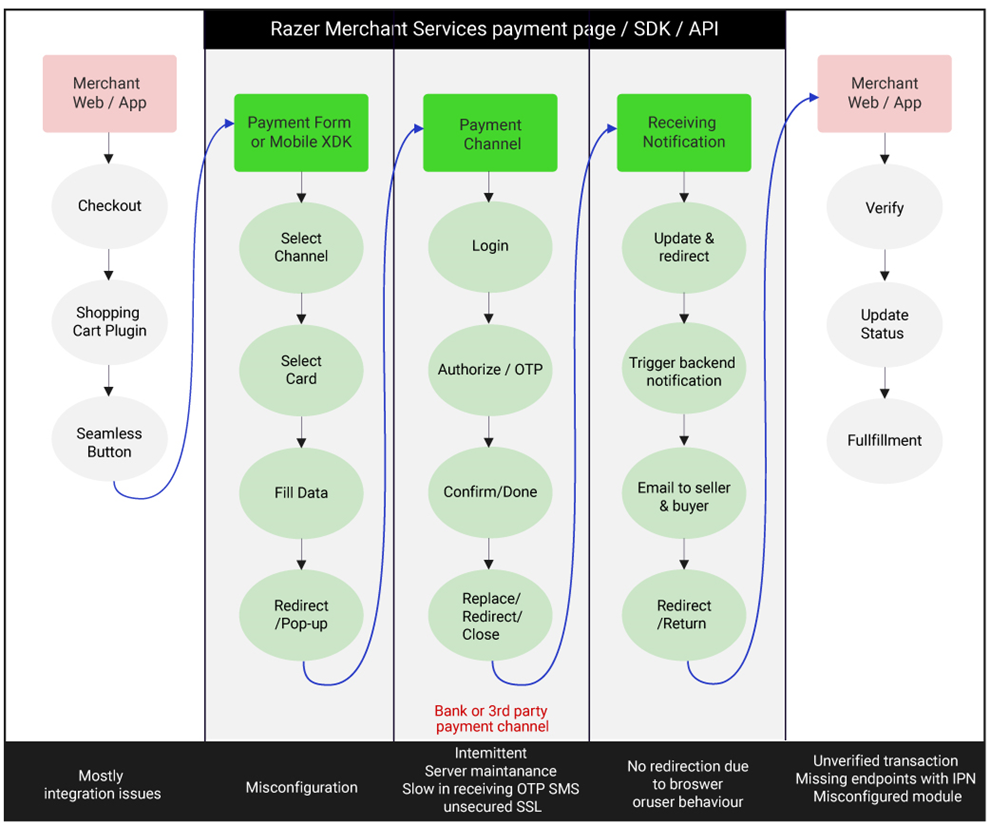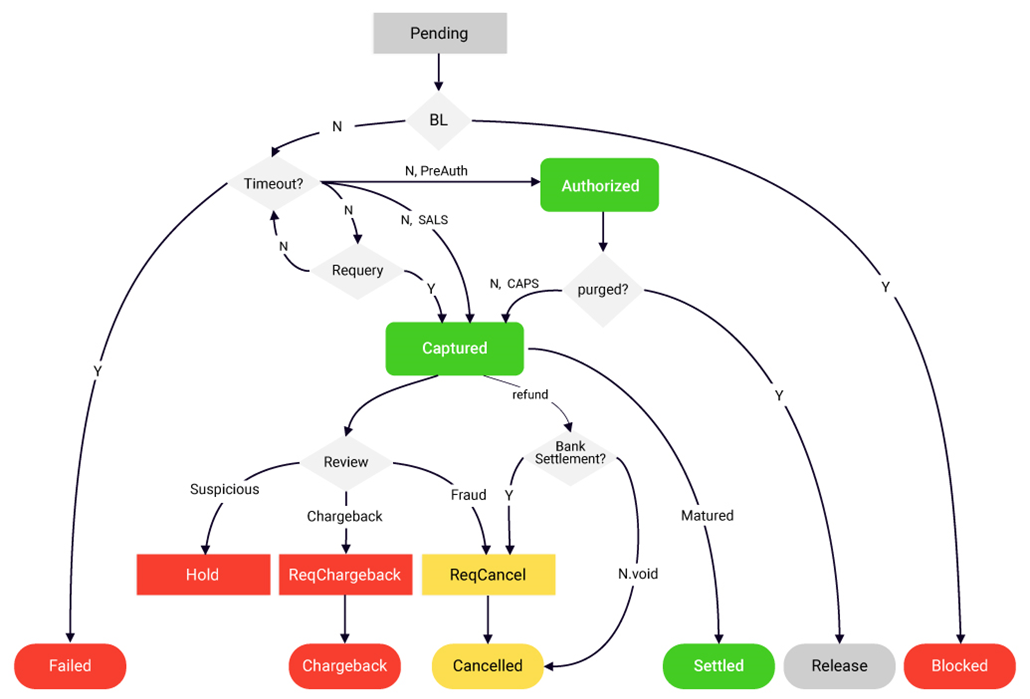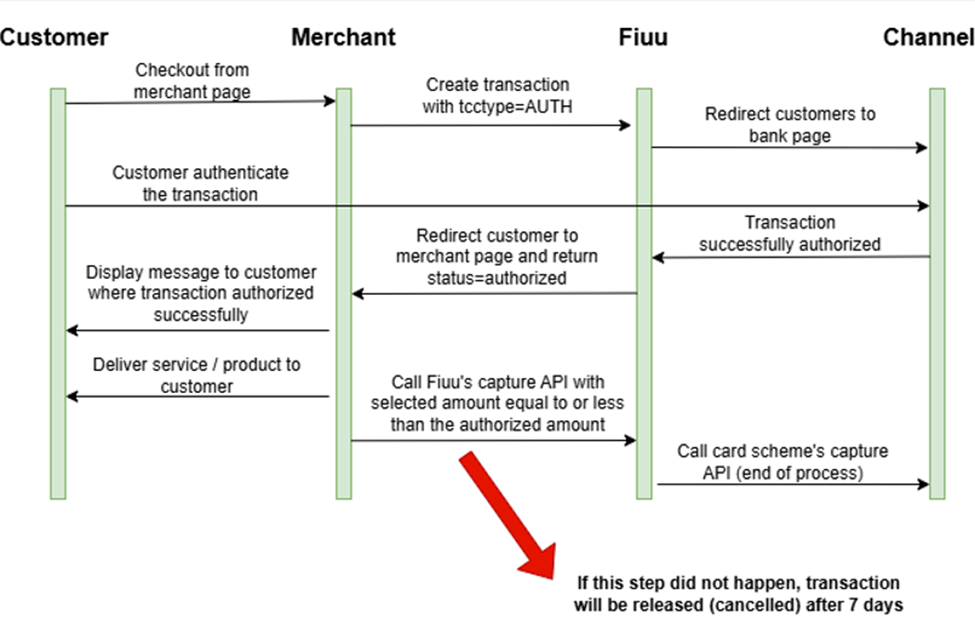Payment Flow Overview
PG provides hosted payment page service, so that merchants do not require costly and tech-savvy PCI-DSS compliance at merchant websites or systems. The integration is as simple as passing parameters via HTTPS POST or GET method from merchant to PG payment page. Buyer will proceed their transaction on internet banking or any payment channel. Once completed, PG will redirect the buyer's front-end back to the merchant system, using the POST method.
IPN (instant payment notification) or ACK from merchants could be implemented to confirm the receiving of payment status updates.


How to identify and report tech-related issues to PG?

Merchant needs to prepare 3 simple and similar payment endpoint scripts to handle the payment notification from the payment gateway:
- Return URL: front-end or browser redirection notification, which are normally not a 100% reliable and robust channel due to unexpected network connectivity issue or client-side behavior, such as browser application crashes;
- Notification URL (webhook): a server-to-server back-end webhook which is more robust and crucial for payment status or order update;
- Callback URL (webhook): a special handler webhook to get notified on non-realtime payment status, such as “deferred status update”, change of payment status, or Fiuu Cash, which is not a realtime payment naturally.
After the normal payment flow, merchants can always send payment status query requests, which is defined in reQuery APIs (a.k.a PSQ, Payment Status Query).

Payment Status Flow:

Pre authorization workflow is suitable for business without knowing the exact amount to be charged before the service or item is delivered. This feature can be enabled upon request by sending an email to [email protected]. (Refer Capture Request).

Updated 18 days ago
